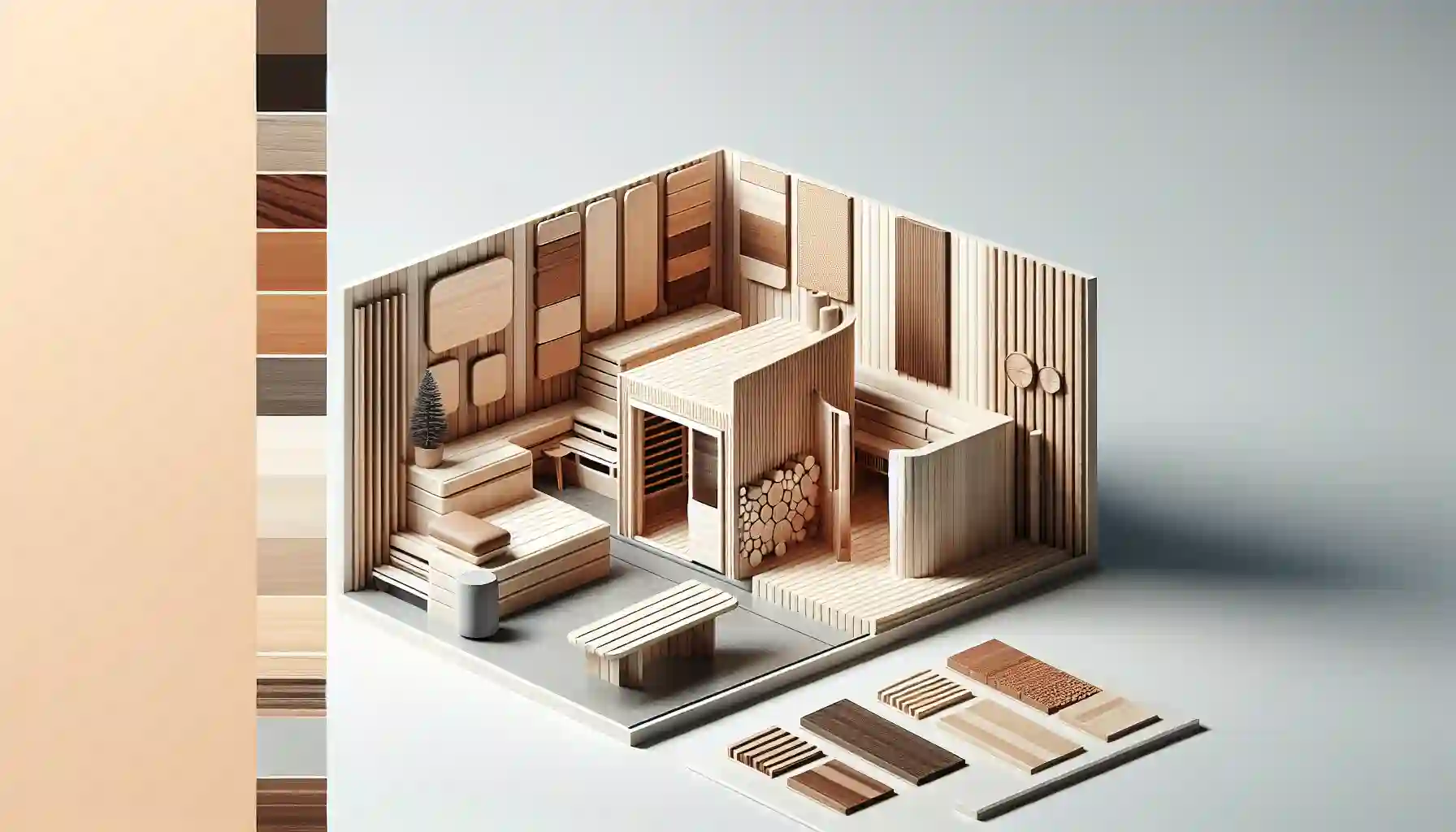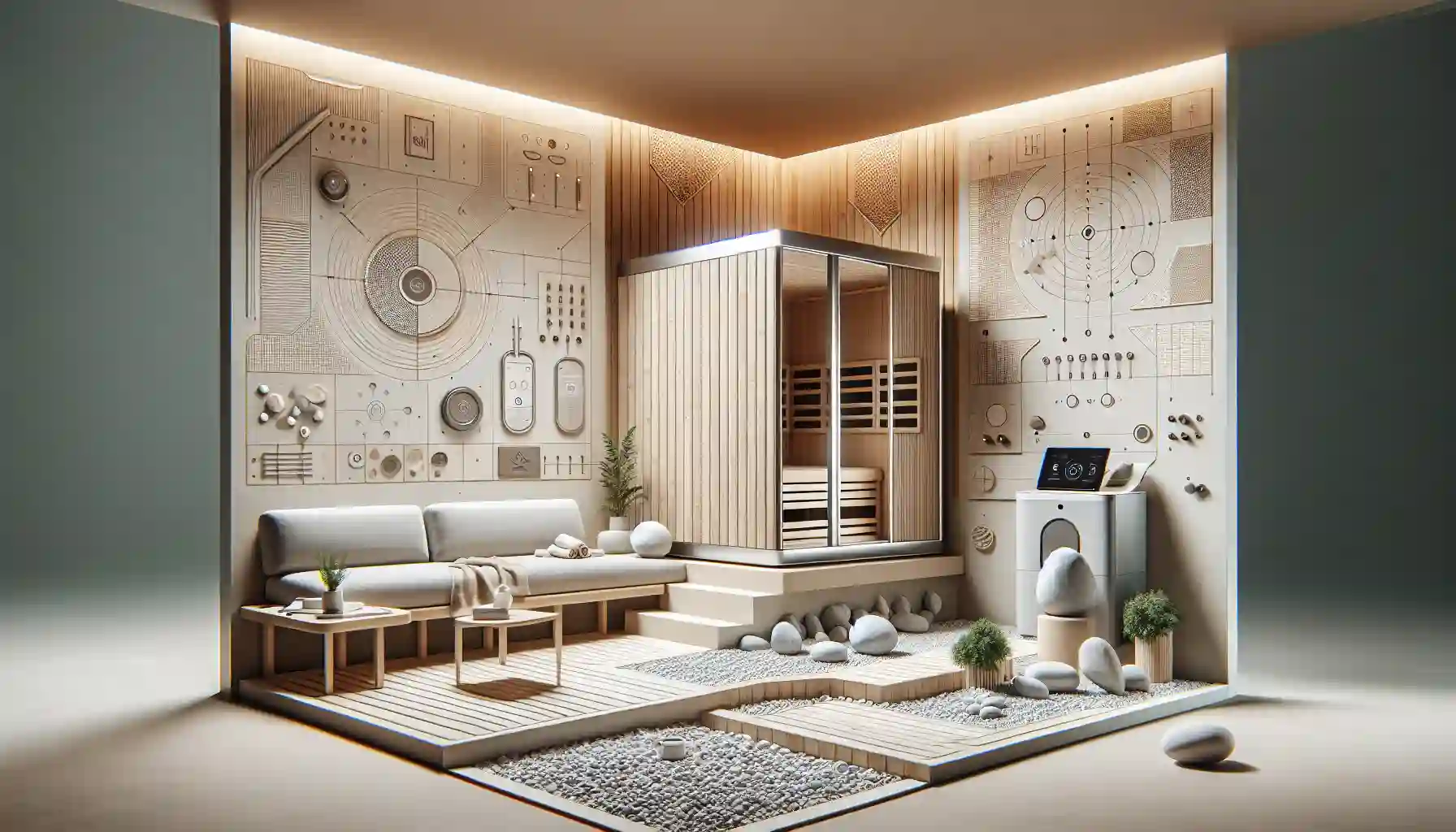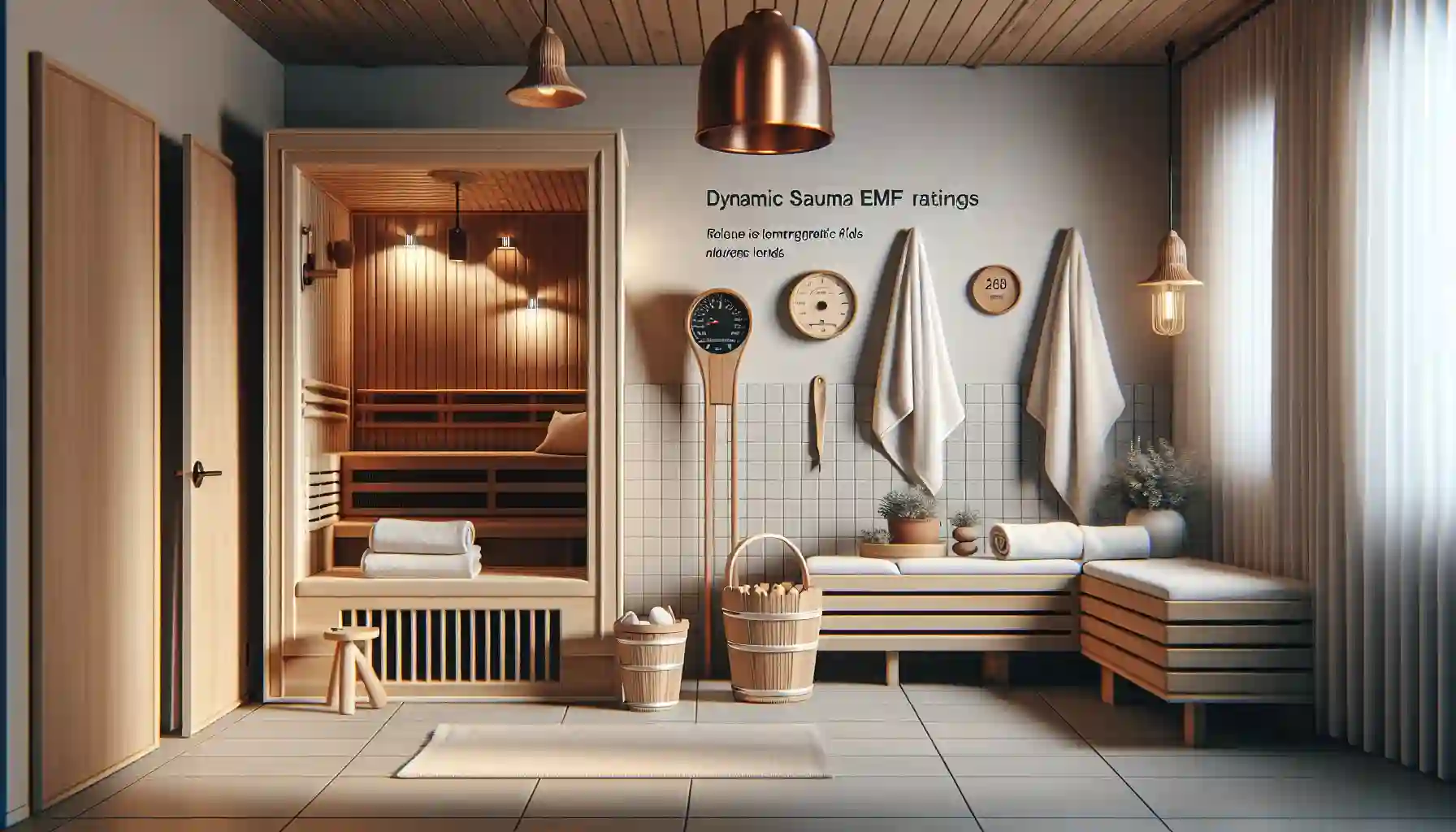From the scent that fills the air to the feel of the bench against your skin, the right material makes all the difference. This guide will walk you through everything you need to know to craft your ideal wellness space, from wood properties to specific types and maintenance tips.
What Makes a Great Sauna Wood?
Not just any lumber will do. Sauna woods are special, chosen for their ability to handle extreme temperature swings and high humidity while remaining safe and comfortable. Here are the key sauna wood properties to look for:
Thermal Stability: The wood must resist warping, cracking, or shrinking when exposed to intense, cycling heat.
Low Resin and Sap: You don't want hot sap dripping on you or your benches. Woods with minimal resin content are essential for safety and cleanliness.
Decay Resistance: Saunas are moist environments, making rot and mold resistance a top priority for durability.
Low Knot Count: Fewer knots mean a smoother, more uniform appearance. More importantly, knots can get much hotter than the surrounding wood, creating uncomfortable hot spots. Clear or near-clear grades are preferred.
Low Heat Conductivity: You need to be able to sit down without getting burned. The best sauna woods feel cool to the touch even when the room is hot.
Pleasant Aroma (or Lack Thereof): Some people love the classic, aromatic scent of cedar, while others prefer a neutral-smelling wood, especially if they are sensitive to smells or plan to use essential oils.
Dimensional Stability: The wood shouldn't expand or contract excessively with changes in humidity, which could lead to gaps or buckling.
Sustainability: Look for woods sourced from responsibly managed forests. Certifications from organizations like the Forest Stewardship Council (FSC) or the Programme for the Endorsement of Forest Certification (PEFC) ensure your choice is environmentally sound.
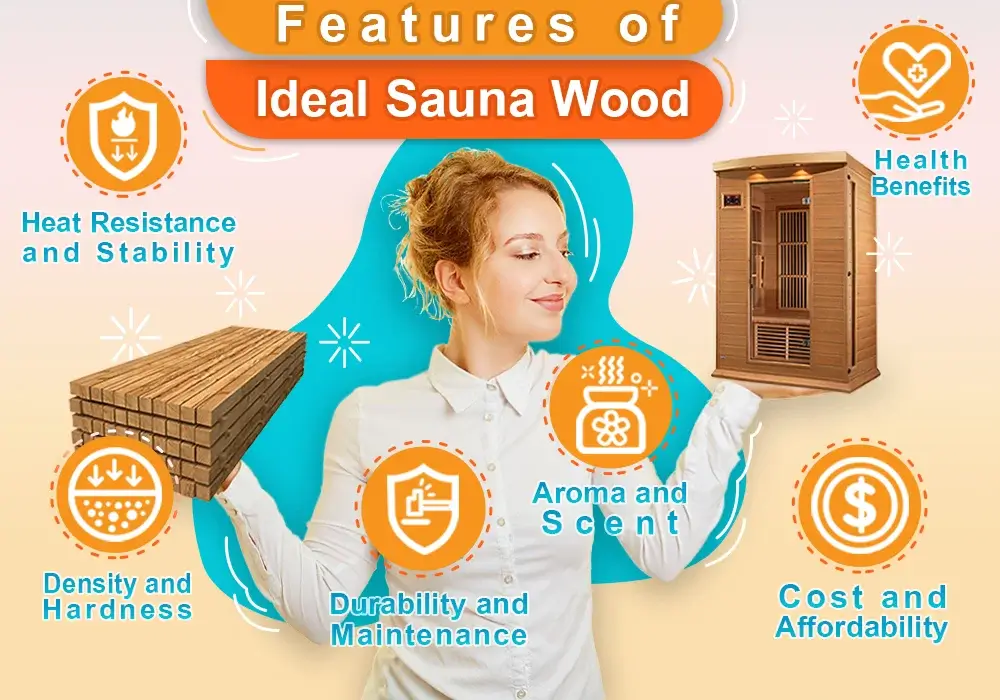
The Top Sauna Woods and When to Choose Them
Let's dive into the most popular choices for building a sauna. We’ll compare everything from the classic cedar sauna wood to modern thermo-treated options.
Western Red Cedar
Western Red Cedar is often considered the gold standard for saunas, and for good reason. It’s an aromatic softwood that embodies the traditional sauna experience.
Best Use: Walls, ceilings, and benches. It’s an all-around performer.
Feel & Aroma: It has a rich, earthy, and sweet aroma that many people associate with saunas. The wood is soft and has a beautiful red-to-pink hue.
Pros: Naturally resistant to rot and insects, dimensionally stable, and it smells amazing.
Cons: It's one of the more expensive options. The strong scent can be overwhelming for some, and a small percentage of people may have sensitivities to its natural oils.
Best For: Those who want the quintessential, aromatic sauna experience and have a flexible budget.
Maintenance: Cedar is low-maintenance but can develop dark spots from sweat over time. Light sanding can restore its appearance.
Eastern White Cedar (Northern White Cedar)
A cousin to Western Red Cedar, Eastern White Cedar is a fantastic and often more economical alternative.
Best Use: Primarily for interior paneling (walls and ceilings).
Feel & Aroma: It has a lighter, more subtle aroma than its western counterpart. The color is paler, with a creamy white to light tan appearance and typically features more knots.
Pros: Excellent rot resistance, more affordable than Red Cedar, and offers a gentle, pleasant scent.
Cons: Softer and more prone to denting. The knotty appearance might not be for everyone.
Best For: Builders looking for the benefits of cedar on a tighter budget who enjoy a more rustic, knotty look.
Maintenance: Similar to Western Red Cedar; it holds up well with minimal care.
Nordic Spruce
A traditional favorite in Finnish saunas, Nordic Spruce is a light-colored softwood that creates a bright and clean aesthetic.
Best Use: Walls and ceilings. It’s less ideal for benches due to its potential for sap and hotter knots.
Feel & Aroma: Very light in color with a straight grain. It has a mild, fresh woodsy scent. It may have small, tight knots.
Pros: Cost-effective, durable, and creates a bright, airy feeling.
Cons: Can have small amounts of resin bleed from knots when new. The knots can also get hotter than the surrounding wood.
Best For: Anyone seeking a traditional Finnish look and a budget-friendly, durable option for walls.
Maintenance: If any resin does seep, it can be easily scraped off once it hardens.
Aspen
Aspen is a light-colored hardwood that’s praised for its clean appearance and user-friendly properties.
Best Use: Excellent for sauna bench wood, backrests, and other surfaces that contact the skin. Also great for walls if you prefer a non-aromatic room.
Feel & Aroma: It has virtually no scent, making it ideal for those with sensitivities or who prefer to use aromatherapy. It’s smooth, non-porous, and remains cool to the touch.
Pros: Hypoallergenic, stays cool, no splinters or sap, and has a clean, premium look.
Cons: It's not naturally rot-resistant, so it requires a well-ventilated sauna. It’s also a softer hardwood, so it can dent.
Best For: People with scent sensitivities, or for benches in any sauna.
Maintenance: Aspen can absorb sweat and oils, so using a sauna-safe paraffin oil sealant can help protect it. Regular cleaning is recommended.
Hemlock
Canadian or Western Hemlock is often compared to cedar but offers a different set of characteristics. It’s a great middle-ground option.
Best Use: Walls and ceilings. Some use it for benches, but woods like Aspen or Cedar are generally better for skin contact.
Feel & Aroma: It has a light, uniform color and very little scent. The grain is straight and consistent, with almost no knots.
Pros: Affordable, non-aromatic, and has a beautiful, clean appearance. It’s harder than cedar, so it resists dents better.
Cons: It lacks the natural decay resistance of cedar. This makes the hemlock vs cedar sauna debate important—hemlock is best for indoor saunas where moisture is well-managed.
Best For: indoor saunas where a clean, non-aromatic, and budget-friendly wood is desired.
Maintenance: Requires good ventilation to prevent moisture issues.
Thermo-Treated Wood
Thermo-treated wood isn't a species but a process. Woods like Aspen, Pine, or Spruce are heated to high temperatures in an oxygen-free environment. This process, as explained by the International ThermoWood Association, changes the wood's cellular structure.
Best Use: Walls, ceilings, and benches. A thermo-treated wood sauna is exceptionally durable.
Feel & Aroma: The process gives the wood a beautiful, rich brown color, similar to roasted coffee. It removes all resins and sugars, leaving a subtle, pleasant "toasted" scent.
Pros: Incredible stability and rot resistance, making it suitable for outdoor saunas. Beautiful, consistent color.
Cons: The thermal process can make the wood more brittle and it is often more expensive.
Best For: outdoor saunas, high-use environments, or anyone wanting maximum durability with a unique, luxurious look.
Maintenance: Very low. Its enhanced stability and resistance reduce maintenance needs significantly.

Benches vs. Walls: Mix-and-Match Strategies
You don't have to stick to one type of wood. A popular strategy is to use different woods for different purposes.
Benches: The best sauna bench wood stays cool to the touch, is non-porous, and doesn't have splinters. Aspen, Alder, and Western Red Cedar are top choices. Using a cooler wood like Aspen for benches while using aromatic cedar for the walls gives you the best of both worlds: comfort and atmosphere.
Walls & Ceilings: This is where you can prioritize aroma and aesthetics. Cedar, Spruce, and Hemlock are all excellent wall materials.
Fasteners & Finishes: Always use stainless steel nails or screws to prevent rust streaks. Avoid any film-forming finishes like varnish or lacquer inside the sauna—they can release harmful fumes when heated. If you must treat the wood, use a penetrating, non-toxic sauna-safe oil, especially on benches.
Indoor vs. Outdoor Saunas
Your sauna's location heavily influences your wood choice.
Indoor Saunas: Have more flexibility. Woods with less natural rot resistance, like Hemlock or untreated Spruce, are fine as long as the room has good ventilation.
Outdoor Saunas: Must withstand rain, UV rays, insects, and dramatic temperature swings. Western Red Cedar and thermo-treated woods are the clear winners here due to their superior durability and weather resistance. You should also consider using thicker boards for better insulation and structural integrity.
Budget, Availability, and Sustainability
When planning, consider the "three A's": affordability, availability, and accountability.
Grading: Wood is graded based on its appearance. "Clear" grades have few to no knots and are the most expensive. "Knotty" grades are more rustic and affordable.
Sourcing: Sourcing wood regionally can sometimes reduce costs and environmental impact. Check with local lumberyards for availability.
Sustainability: A study by the U.S. Forest Service highlights the importance of sustainable forestry. Always ask if the wood is FSC or PEFC certified to ensure it comes from a responsibly managed source.
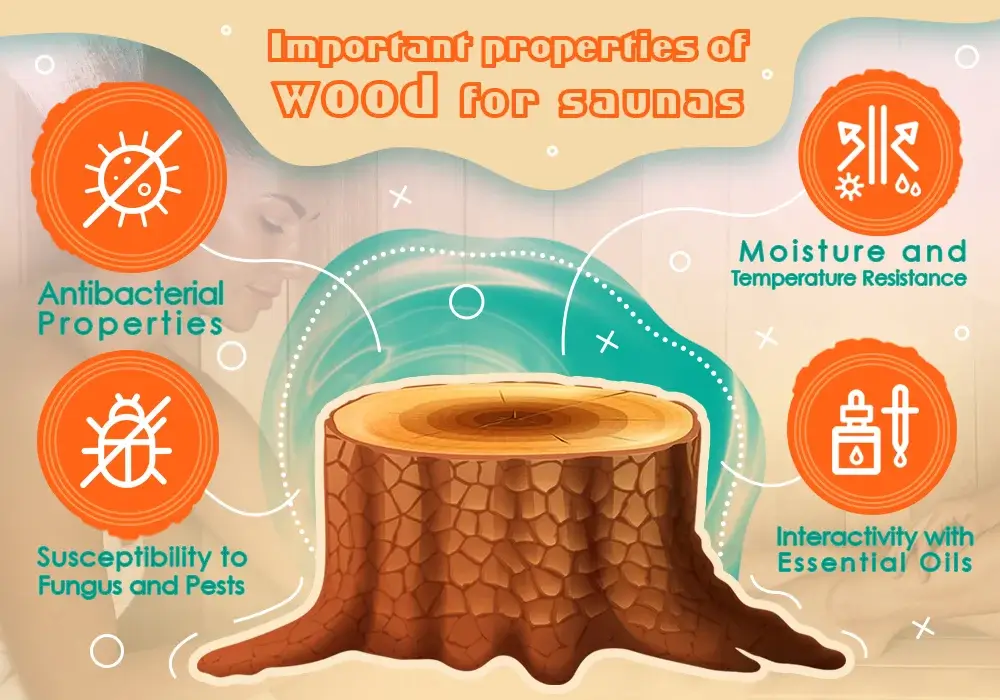
Care and Longevity: Sauna Maintenance
Proper sauna maintenance ensures your wellness space remains clean, beautiful, and inviting for years.
Regular Cleaning: Use a damp cloth with plain water after each session to wipe down benches. For a deeper clean, use a soft brush and a mild solution of baking soda and water.
Avoid Harsh Chemicals: Never use harsh detergents or chemical cleaners inside your sauna. They can absorb into the wood and release fumes when heated.
Tackle Sweat Stains: Lightly sand benches once or twice a year with fine-grit sandpaper to remove any sweat stains and refresh the wood surface.
Ensure Good Ventilation: Always air out your sauna after use. Leave the door and vents open to allow moisture to escape, preventing mold and mildew.
Seasonal Checklist:
Check for any loose boards or fasteners.
Inspect for any signs of mold, especially in corners.
Lightly sand benches and backrests.
For outdoor saunas, check the exterior for any weather-related wear and tear.
Your Perfect Sauna Awaits
Choosing the best wood for your sauna is a personal journey that balances aroma, aesthetics, budget, and performance. Whether you crave the rich, enveloping scent of cedar, the clean neutrality of Aspen, or the unmatched durability of thermo-treated wood, the perfect material is out there.
Think about how you want your sauna to feel, smell, and function. By understanding the unique properties of each wood, you can confidently select the one that will transform your space into the ultimate sanctuary for health and relaxation.
